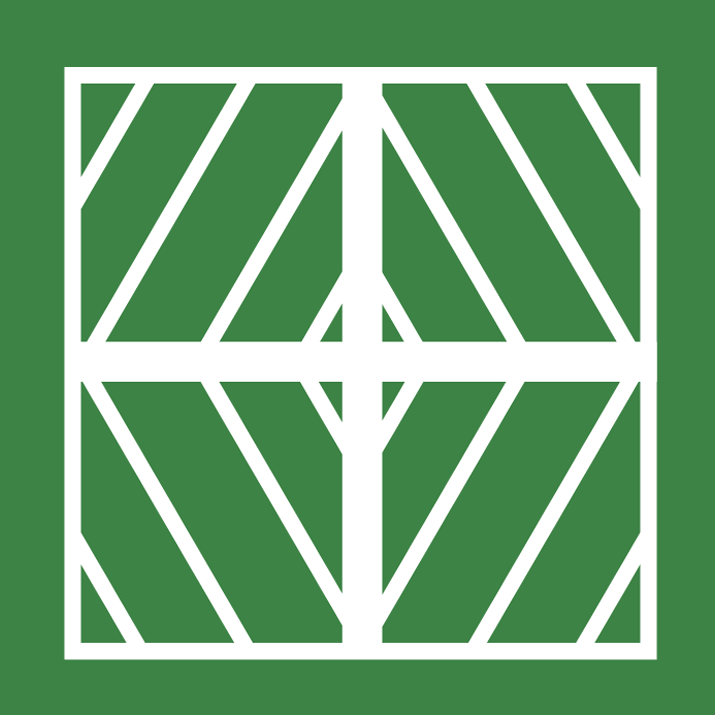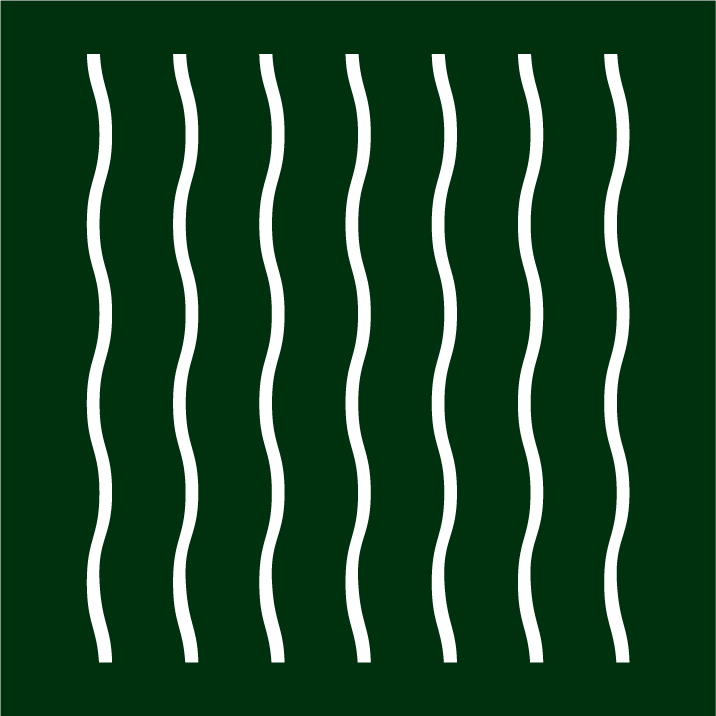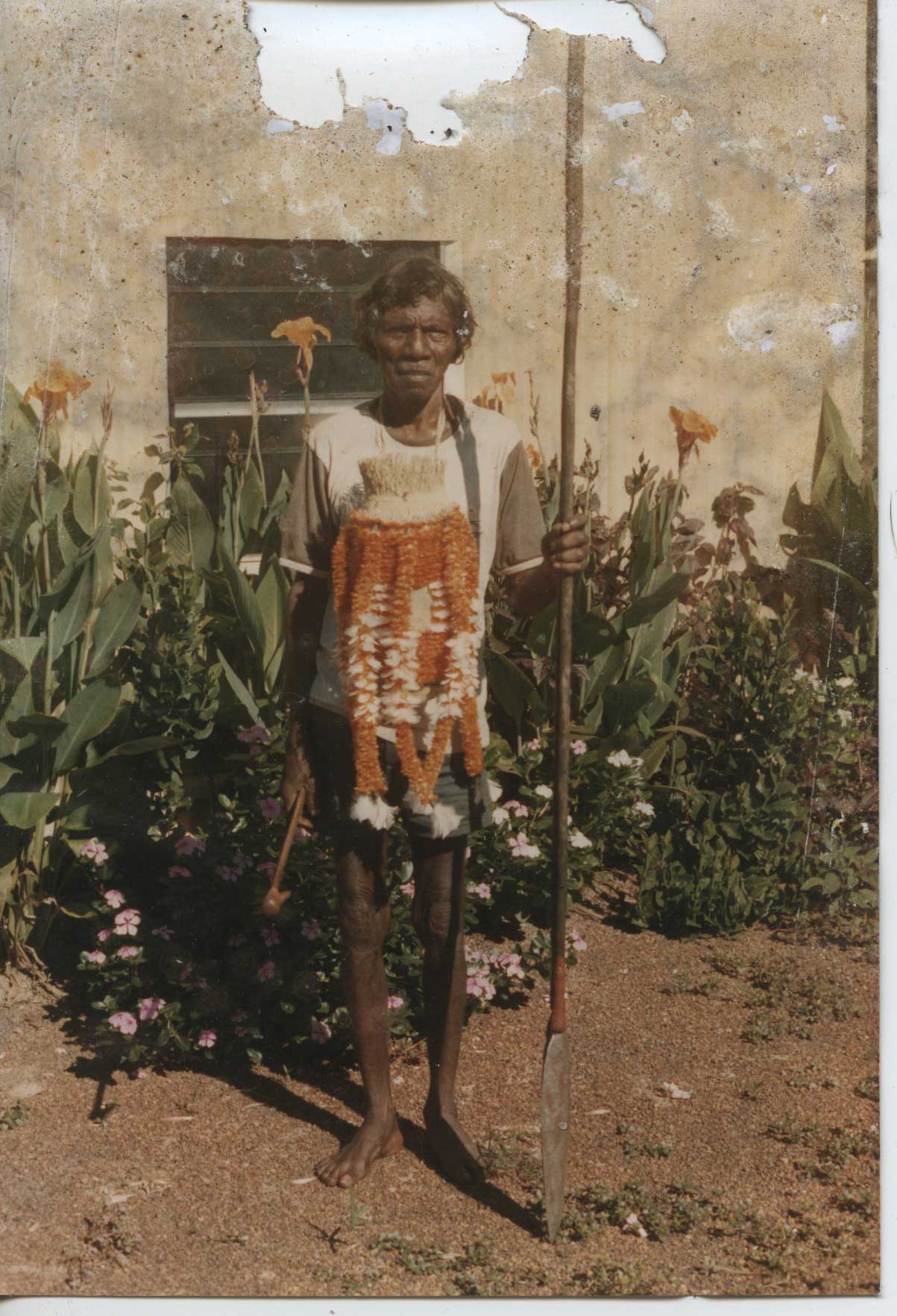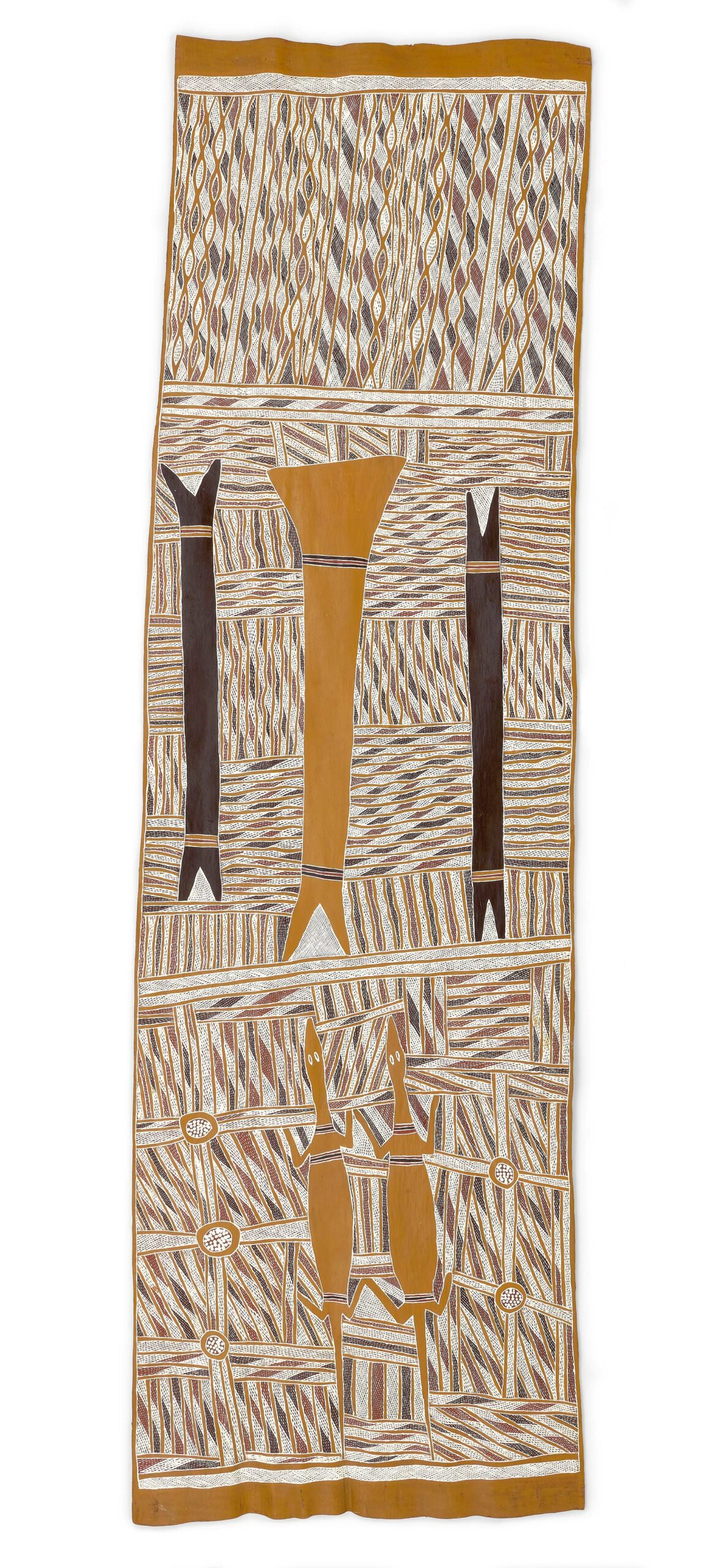
"My father was the painter of this design. People of other clans are not to steal this design: it belongs only to the Ḏäṯiwuy clan. But if you look closely, you will see that there are, in fact, two different designs painted here: Dhuwa and Yirritja. The Dhuwa elements are these two goannas (Monitor lizards) and these milŋurr (sacred waterholes shown as connected circles) at the bottom. The lizards come out from the waterhole and sun themselves, just as these two are coming out, sunning themselves and having a rest.
Now, see there, above the lizards, see those two logs? Those are baṉdjurr (mangrove trees). And this is a Dhukururru (sacred rock), in the middle, and those two baṉdjurr, they have mangrove worms inside them. The worms are called milka’. And this Dhukururru, this is a sacred rock, standing at the place called Dhäliny. It is Yirritja, belonging to the Wangurri clan. And these bits on them are the white residues of the saltwater, the räŋ (high-water mark).
My father has painted Dhuwa and Yirritja together, because this is his mother, and this is his father’s painting. So, this is painted by the rightful owner. That’s how it is. Dhuwa and Yirritja: Ḏäṯiwuy and Wangurri. The waters and the lands of these two clans are close. They embrace each other. Their mother–child relationship is what is represented here. And, as this painting shows, their descendants—the new generation—recognize one another."
– WILSON MANYDJARRI GANAMBARR
More Info
This painting is split into three panels. The bottom of the painting depicts two biyay (Monitor lizards). This panel belongs to the Ḏäṯiwuy clan of the Dhuwa moiety. The two panels above describe the passage of a rock that traveled through Wagurri and Gumatj land before coming to rest at Buymarr (where it still stands).
The top panel represents Yirritja wisdom as represented by the Yolŋu concept of Dalatj or Betj (freshwater knowledge). The artist refers to the relationship between the Gumatj and the Wangurri. They give each other words and their knowledge flows together like the mingling of water in two rivers.
The large yellow object in the middle panel is the rock Brayŋur. It came from Gutatjpirrŋur to Nyapuḏu and looked for a palace to stay until it found Gaymala. The round circles on the bottom panel are referred to as springs that record the yothu-yindi (mother-child) relationship between the Wangurri and Ḏäṯiwuy clans. In describing this painting, the artist moved seamlessly between Ḏäṯiwuy, Wangurri and Gumatj languages as the rock moved between these lands.
– Buku-Larrŋgay Mulka Centre
Additional Information
Decade
1996
Medium
Natural pigments on eucalyptus bark
Dimensions (IN)
115 ½ x 35
Dimensions (CM)
293 x 89
Credit
Kluge-Ruhe Aboriginal Art Collection of the University of Virginia.
Gift of John W. Kluge, 1997. 1996.0035.024
Narrative
Ḏäṯiwuy
The Ḏäṯiwuy clan belongs to the Dhuwa moiety. Major spiritual themes of the Däṯiwuy clan...
Narrative
Wangurri
The Wangurri homeland is at Dhalinybuy, a freshwater community on the Cato River surrounded by...
Location
1990s
Buku-Larrŋgay Mulka Centre began the 1990s in a phase of rebuilding. By the end of...
About The Artist(s)
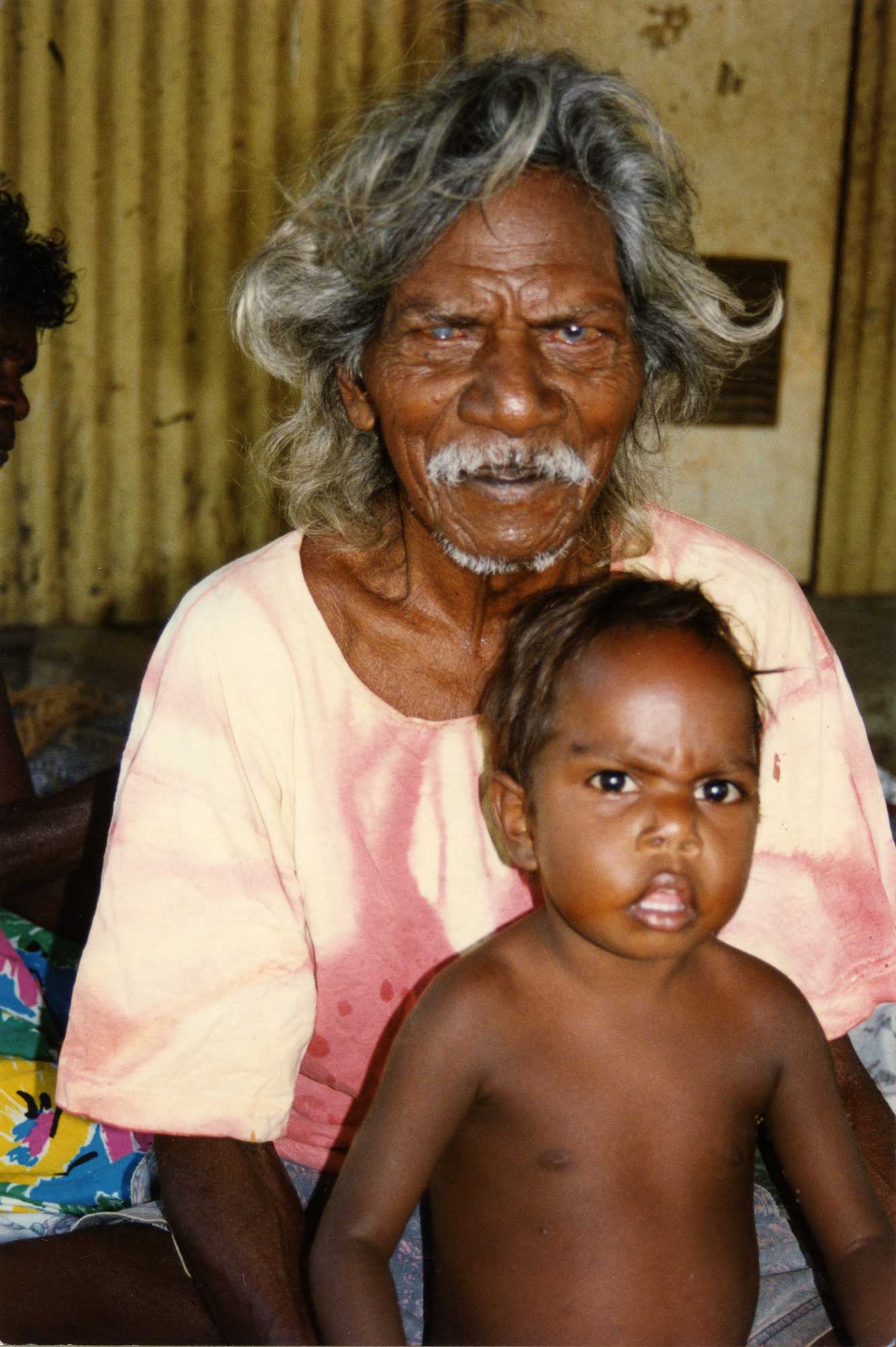
Clan
Ḏäṯiwuy
Artist Dates
c.1920-2005
Alternative Names
Mickey, Moara, Mora, Mowara, Muara
Mowarra Ganambarr OAM
During World War II, Mowarra Ganambarr served as a member of the Northern Territory Special Reconnaissance Unit (NTSRU) of the Australian Army. He first produced art for the anthropologists Ronald and Catherine Berndt in 1947, beginning a long and distinguished career as an artist. In 2000, he was awarded the Medal of the Order of Australia.
Collections Represented
Australian National Maritime Museum
Berndt Museum of Anthropology, University of Western Australia
Kluge-Ruhe Aboriginal Art Collection of the University of Virginia
University of Newcastle
